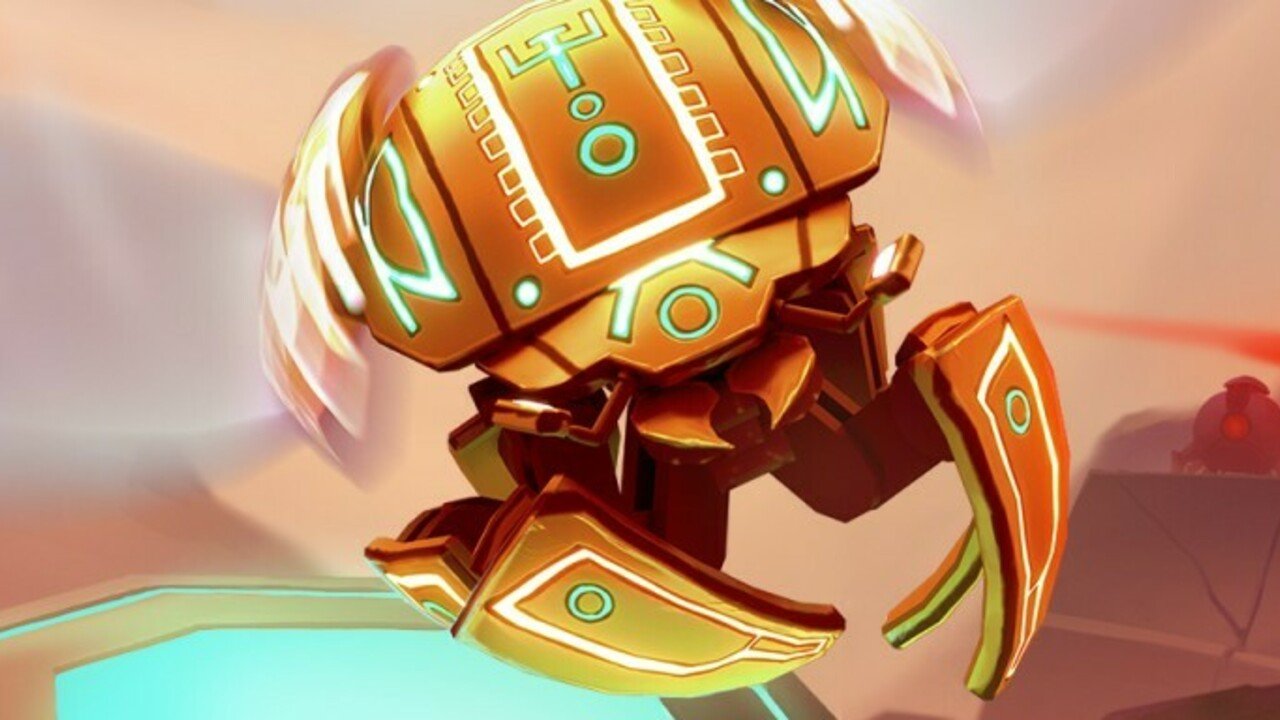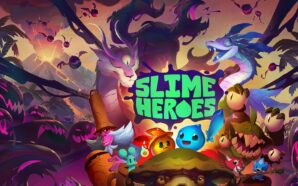GLYPH REVIEW (SWITCH)
In this rolling puzzle platformer a robotic dung beetle called Anobi wakes Glyph up from a deep sleep to help aid it in finding the lost Temple City of Aaru. Buried under the sand by a corrupt machine, Glyph must restore the Temple of Aaru by collecting Power Gems from the ruins of civilisation, and ultimately find a way to quell the corruption.
Glyph has a simple formula that’ll be familiar with those who grew up playing Spyro and other 3D platformers from the PS1/N64 era. Roll, bounce and fly through several levels to collect coins and amulets to unlock new levels. More levels means more Power Gems. More Power Gems restores more of the Temple City of Aaru, which eventually culminates to a final boss fight to restore the status quo.
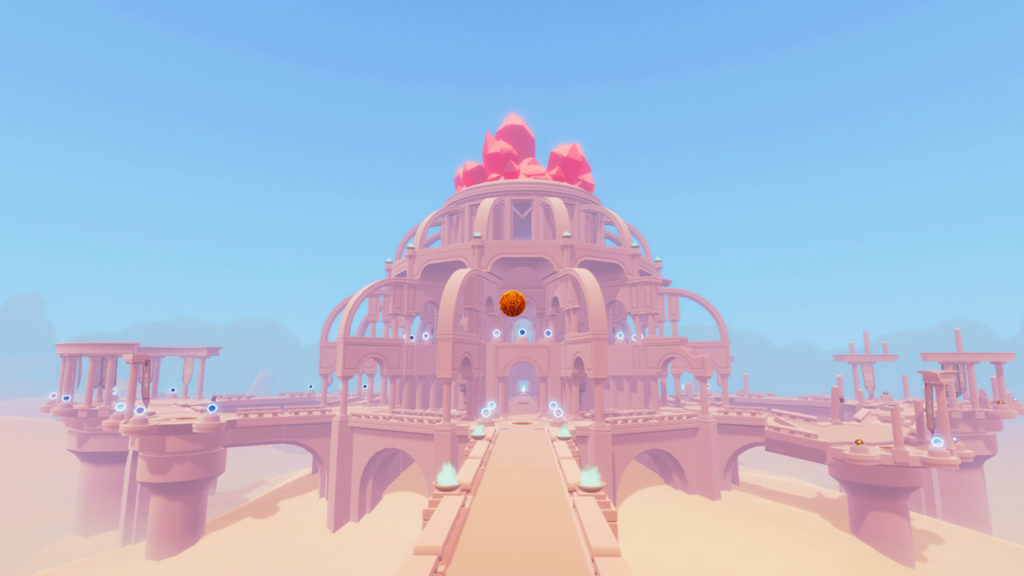
With an air of Super Monkey Ball, each level resembles a kind-of maze or miniature golf course carved into stone, and rolling off the edge into the desert sand will lead to a firey death. This won’t be a problem to begin with as controlling Glyph feels effortless and forgiving. Glyph will stick slightly to the edges of the stone platforms, giving you ample time to roll it back to safety. Even when airborne you can control Glyph’s trajectory with ease and accuracy. However, once levels become more complex controlling Glyph requires more finesse, which can be difficult to achieve due to how floaty it is.
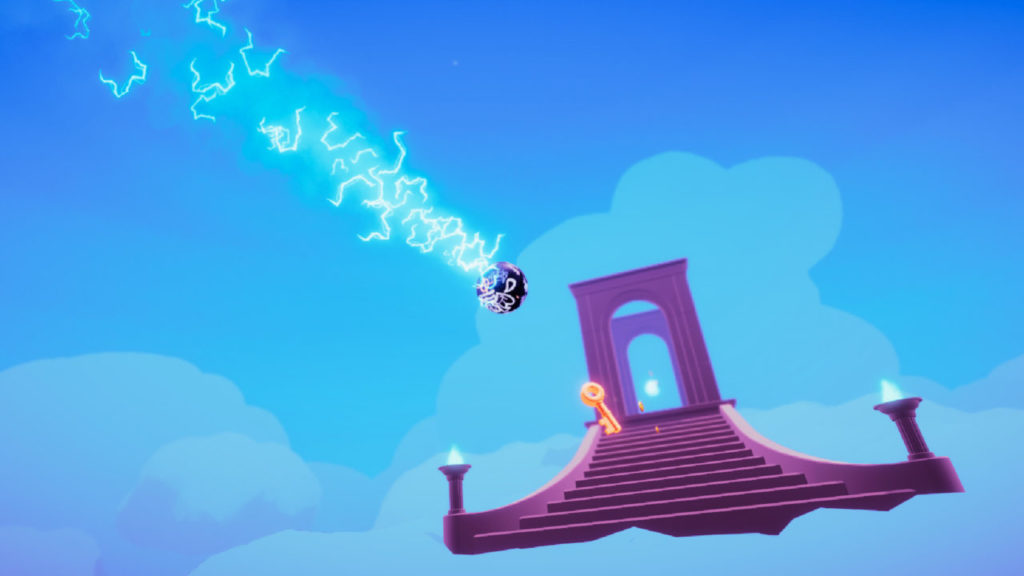
There are two types of stages: Exploration and Time Trial. The Exploration levels are where you’ll find all your currencies and you’re able to explore the tiny curated ruins at your own leisure. To add the coins, amulets and Power Gems to your bank you need to successfully collect all the keys to exit the level. The Time Trial levels ask you to collect all the keys within a given time, and these levels genuinely require you to think outside the box. They’re arguably more challenging than the Exploration levels but they also offer up more Power Gems, so it’s a fair trade-off.
Every level features a collectible cosmetic. Exploration rewards you with character skins and the Time Trials reward you with different trails. There are so many levels in Glyph that there are equally as many cosmetics to unlock, and this certainly adds an extra dimension of satisfaction. The skins are wacky and creative, and you’ll find great pleasure playing around with the variety on offer. The trails can be visually distracting (especially when trying to land on a tiny platform) but they’ll help define your perception of Glyph from anyone else’s.
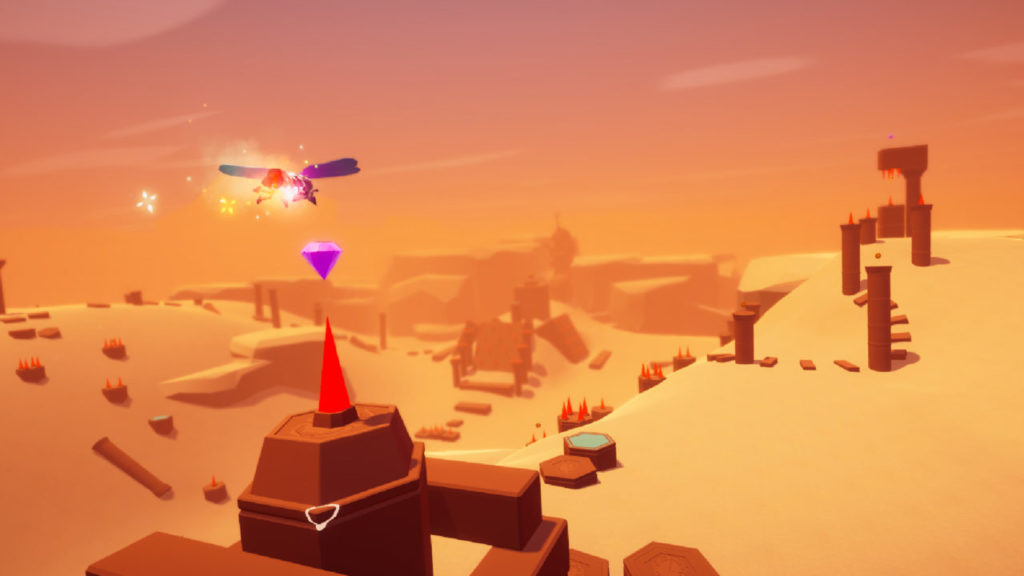
Glyph’s greatest downfall is its difficulty and its level design. If you like the punishing and repetitive nature of Super Meat Boy or Celeste then Glyph will definitely appeal to you but for everyone else it’ll become tedious and painfully frustrating. What Glyph doesn’t have that Super Meat Boy and Celeste do is an interesting, detailed world with compelling narrative threads to cling on to. Anobi lays the groundwork with exposition every time you meet it but because every level has the same flat, smooth, textureless infrastructure it fails to convey the breadth of the world in any meaningful way. When all the places look the same (besides a shift in colour) it’s impossible to remember which bit of history relates to which part of the world.
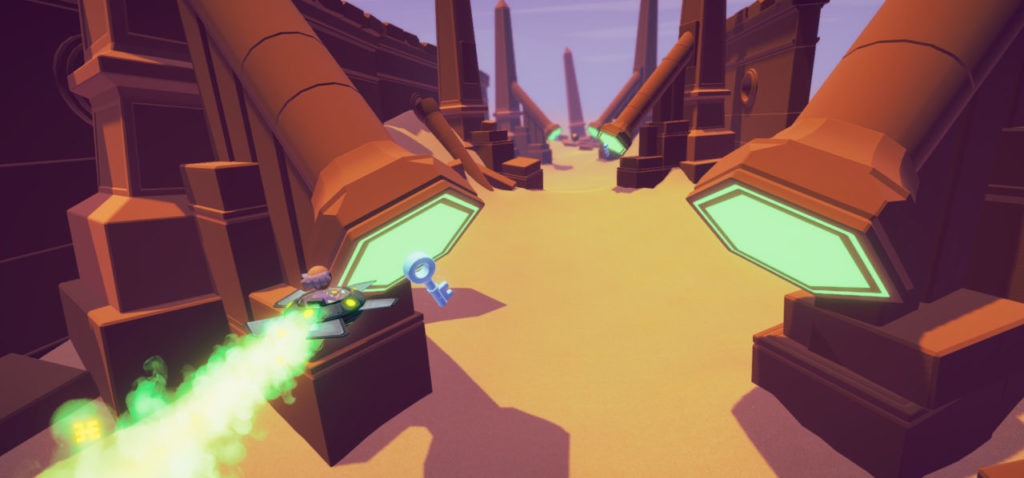
And, once levels become obnoxiously barren of safe land to perch on, levels become an exercise in bite-sized labour, where you’ll attempt each stage in tiny portions until you’re able to cling on to all the keys long enough to get the hell out of there.
Should you play it? Maybe…
Why… Glyph is fun and easy to get to grips with until you begin to resent it, that is. Later levels don’t offer up many platforms, which is problematic for a platformer, and you’ll find yourself constantly balancing Glyph on a piece of rock as narrow as a pin, sucking all the life and momentum out of it.
But… With a plethora of levels and cosmetics to unlock there’s plenty of challenges to conquer. It’s impossible to deny how much content is available, so if you’re a completionist or one of those people who is compelled to finish every stage of a game you’ll have something to tie you over till next year with Glyph.
Reviewed on Switch
Developer: Bolverk Games
Publisher: Bolverk Games
Playable on: Switch/PC
Released: 11th January, 2021




